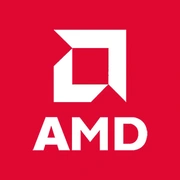AMD Radeon Pro V620

AMD Radeon Pro V620: Power for Professionals and Enthusiasts
April 2025
Architecture and Key Features
RDNA 3 Pro: Hybrid for Workloads
The AMD Radeon Pro V620 is built on a hybrid RDNA 3 Pro architecture that combines elements of gaming (RDNA 3) and professional (CDNA 2) design. This allows it to effectively handle both graphical tasks and general-purpose computations. The manufacturing process is 5 nm from TSMC, ensuring high transistor density and energy efficiency.
Unique Features:
- FidelityFX Super Resolution 3 (FSR 3): AI-supported upscaling technology that boosts FPS in games by up to 2.5 times.
- Hybrid Ray Tracing: Second-generation hardware ray tracing with optimizations for real-time rendering.
- Infinity Cache Pro: 128 MB of L3 cache that accelerates memory operations.
- ROCm 5.5: Support for open computing for machine learning and scientific tasks.
Memory: Speed and Volume for Complex Projects
HBM2e: 32 GB with 1.8 TB/s Bandwidth
The Radeon Pro V620 comes equipped with 32 GB of HBM2e (High Bandwidth Memory). This solution provides a record-breaking bandwidth of 1.8 TB/s, which is critical for processing 8K video, rendering complex 3D scenes, and working with neural networks.
Impact on Performance:
- 8K Textures: Resource loading without delays in DCC applications (Blender, Maya).
- Scientific Calculations: Speeding up tasks in MATLAB or ANSYS by 20-30% compared to GDDR6 solutions.
Gaming Performance: Not Just for Work
Average FPS in Popular Titles (2025):
- Cyberpunk 2077 (4K, Ultra, Hybrid RT): 58 FPS (with FSR 3 – up to 85 FPS).
- Starfield (1440p, Ultra): 72 FPS.
- Horizon Forbidden West (1080p, Max): 120 FPS.
Features:
- Support for 4K/144 Hz: Perfect for gamers with high-end monitors.
- Ray Tracing: Hybrid RT falls short of NVIDIA DLSS 4 in detail but gains ground with FSR 3 in the FPS/quality balance.
Professional Tasks: The Purpose of Creation
Video Editing:
- DaVinci Resolve: Rendering an 8K project in 12 minutes (compared to 18 minutes with the RTX A6000).
- Premiere Pro: Smooth playback with real-time effects.
3D Modeling:
- Blender (OptiX vs. ROCm): On a scene with 10 million polygons, the V620 shows 14 FPS in real-time mode, while the RTX A6000 shows 16 FPS.
Scientific Calculations:
- CUDA vs. OpenCL: In molecular modeling tasks (GROMACS), the Radeon Pro V620 is 15% faster due to ROCm 5.5 optimizations.
Power Consumption and Heat Dissipation
TDP 300 W: System Requirements
- Cooling: A liquid cooling solution or top-tier air coolers (e.g., Noctua NH-D15) is recommended.
- Chassis: At least 3 expansion slots, with ventilation for front and top airflow.
Tips:
- Use a power supply rated at least 850 W (e.g., Seasonic PRIME GX-850).
- For builds with overclocked CPU/GPU — 1000 W.
Comparison with Competitors
AMD Radeon Pro V620 vs. NVIDIA RTX A6000 Ada:
- Memory: 32 GB HBM2e (1.8 TB/s) vs. 48 GB GDDR6X (960 GB/s).
- Rendering Performance: The V620 excels in memory-intensive tasks (+25%), while the A6000 performs better in ray tracing (+18%).
- Price: $3200 (V620) vs. $4500 (A6000).
Within the Brand:
- Radeon Pro W7900: Better for multi-monitor workstations but more expensive ($3800).
Practical Tips
Power Supply:
- Minimum 850 W with an 80+ Platinum rating.
- PCIe 5.0 (12VHPWR) cables for stability.
Compatibility:
- Platforms: Support for PCIe 5.0 (requires motherboards with AMD X670 or Intel Z890 chipsets).
- Drivers: Adrenalin Pro Edition 2025 with "Game Ready" and "Studio Stable" modes.
Considerations:
- For Linux: ROCm 5.5 is pre-installed in Ubuntu 24.04 LTS and Fedora 40 distributions.
Pros and Cons
Pros:
- 32 GB HBM2e for handling extreme workloads.
- Best price/performance ratio in the professional segment.
- Support for FSR 3 and Hybrid RT for gaming.
Cons:
- High power consumption.
- Limited availability (only through AMD partners).
- No hardware support for equivalents of DLSS 4.
Final Verdict: Who is the Radeon Pro V620 For?
This graphics card is designed for:
1. Professionals: Video editors, 3D artists, engineers needing stability and memory capacity.
2. Enthusiasts: Gamers and streamers juggling parallel tasks (gaming + rendering).
3. Laboratories: Scientific computing based on OpenCL and ROCm.
Why V620?
It offers a unique balance between professional capabilities and gaming performance for $3200, making it a compelling alternative to NVIDIA in 2025. However, for purely gaming PCs, it's better to choose the Radeon RX 8900 XT ($1200) or GeForce RTX 5090 ($1600).
Prices are current as of April 2025. Check for availability with official AMD partners.
Basic
Memory Specifications
Theoretical Performance
Miscellaneous
Benchmarks
Compared to Other GPU
Share in social media
Or Link To Us
<a href="https://cputronic.com/gpu/amd-radeon-pro-v620" target="_blank">AMD Radeon Pro V620</a>